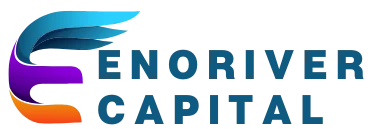In a world where rules seem to multiply faster than rabbits, compliance auditing stands as the unsung hero, ensuring businesses play by the book. It’s like a safety net for companies, catching potential pitfalls before they turn into costly disasters. But let’s face it: the term “compliance auditing” can sound as exciting as watching paint dry.
Yet, beneath that dry veneer lies a treasure trove of insights that can boost efficiency and safeguard reputations. Picture this: a team of auditors swooping in, armed with checklists and a keen eye for detail, ready to uncover hidden gems and potential risks. With a sprinkle of humor and a dash of professionalism, compliance auditing transforms from a daunting task into a valuable opportunity. Buckle up as we dive into the world of compliance auditing and discover how it can keep businesses thriving in a complex regulatory landscape.
Table of Contents
ToggleOverview of Compliance Auditing
Compliance auditing serves as an essential process in business operations, helping organizations adhere to regulations and standards. This practice enhances accountability while identifying areas for improvement.
Definition of Compliance Auditing
Compliance auditing systematically evaluates an organization’s adherence to statutory regulations and internal policies. Auditors review documents, processes, and procedures to ensure that they align with established legal and ethical standards. This process covers various sectors, including finance, healthcare, and environmental practices. By assessing compliance, organizations can prevent violations and ensure transparency.
Importance of Compliance Auditing
Compliance auditing plays a vital role in risk management. Effective audits minimize legal liabilities and protect reputations by identifying potential issues before they escalate. Maintaining compliance fosters trust among stakeholders, including customers and investors. Federal regulations and industry standards continue to evolve, making audits crucial for staying updated. Businesses embracing compliance auditing gain a competitive edge through improved efficiency and operational excellence.
Types of Compliance Audits

Compliance audits can be categorized into different types, each serving a distinct purpose and audience. Understanding these types provides clarity on how organizations maintain adherence to regulations.
Internal Audits
Internal audits assess compliance with internal policies and procedures. They focus on operational efficiency, risk management, and adherence to legal requirements. Conducting internal audits helps organizations identify weaknesses and implement corrective actions proactively. Regular evaluations enhance accountability and ensure standards align with evolving regulations. Auditors emphasize an organization’s internal controls, procedures, and policies. Findings from internal audits guide leadership in making informed decisions toward compliance improvement.
External Audits
External audits provide an independent evaluation of compliance. Involving third-party auditors, these assessments verify adherence to external regulations and industry standards. External audits validate the effectiveness of an organization’s compliance efforts. They establish credibility among stakeholders by offering an unbiased perspective on compliance status. Results from external audits may lead to recommendations for enhanced practices. Organizations often view the findings as opportunities to strengthen their compliance frameworks, ensuring alignment with statutory obligations and reducing risks associated with non-compliance.
The Compliance Auditing Process
The compliance auditing process involves several critical steps to ensure an organization’s adherence to regulations and internal policies. Each stage requires careful attention and planning to maintain effective oversight.
Planning and Preparation
Establishing a clear audit plan is vital for maximizing efficiency. Auditors define the scope of the audit based on regulatory requirements and specific organizational needs. They identify relevant documents, policies, and stakeholder interviews necessary for the audit. Planning helps auditors allocate resources effectively. Additionally, an initial risk assessment dictates focus areas, allowing auditors to prioritize high-risk components during the review process. A robust preparation phase sets the tone for a successful audit execution.
Conducting the Audit
During the audit, teams gather evidence through interviews, document reviews, and observations. Assessing compliance involves comparing actual practices against established regulations and internal policies. Systematic data collection ensures that findings are accurate and actionable. While conducting the audit, auditors maintain objectivity and neutrality. Documenting every step facilitates transparency and supports conclusions drawn during the audit process. Following a structured methodology enhances the reliability of the audit’s outcomes.
Reporting Findings
After completing the audit, crafting a comprehensive report becomes essential. The report should detail compliance levels, identifying strengths and areas needing improvement. Highlighting significant findings ensures that stakeholders understand potential risks. Recommendations offered in the report guide organizations in enhancing compliance frameworks. A clear presentation of findings enables informed decision-making. Timely reporting allows organizations to address issues promptly, ultimately fostering a culture of continuous improvement.
Best Practices for Effective Compliance Auditing
Engaging stakeholders throughout the compliance auditing process enhances its effectiveness. Regular communication fosters transparency, ensuring everyone understands the audit’s objectives. Identifying key stakeholders from the beginning prepares the organization for collaboration. Sharing preliminary findings and progress updates encourages user input, which helps address concerns early. Involving employees in discussions about compliance promotes accountability across all levels. Incorporating feedback ultimately leads to a stronger compliance framework.
Utilizing technology streamlines compliance auditing and increases efficiency. Advanced software solutions aid in data collection and analysis, providing real-time insights. Automation reduces human error, enhancing accuracy in reports and documentation. Implementing cloud-based systems allows for secure access and collaboration among audit teams. Using data analytics tools helps identify trends and potential areas for improvement. Leveraging technology not only simplifies tasks but also enhances the depth of audit findings.
Continuous improvement underscores the foundation of compliance auditing. Regularly reviewing audit processes ensures they remain effective and pertinent to evolving regulations. Conducting lessons learned sessions after each audit provides valuable insights for future efforts. Encouraging a culture of feedback allows organizations to adapt quickly to changes in compliance requirements. Setting measurable goals leads to clearer benchmarks for assessing improvements. Staying proactive in compliance mandates positions businesses ahead of potential risks.
Challenges in Compliance Auditing
Compliance auditing presents various challenges that organizations must navigate effectively. These obstacles can hinder the auditing process and create barriers to achieving compliance.
Common Obstacles
Staff resistance often complicates the auditing process. Employees may feel threatened by the scrutiny of their work, leading to reluctance in sharing information. Additionally, lack of resources undermines audit efforts. Limited budgets can restrict access to necessary tools and technology, impacting efficiency. Complex regulations also pose challenges. Understanding and implementing industry-specific requirements demands significant time and expertise. Finally, inadequate training can result in auditors lacking the skills needed to conduct thorough evaluations.
Strategies to Overcome Challenges
Organizations should foster a culture of transparency to address resistance. Open communication about the audit’s purpose encourages staff to engage positively. Investing in training is crucial. By enhancing auditors’ skills, firms can improve compliance outcomes. Utilizing technology effectively streamlines auditing processes. Automation tools help collect and analyze data efficiently, reducing manual workload. Moreover, establishing clear guidelines simplifies regulatory requirements. Simplifying complex processes allows organizations to focus on essential compliance elements. Regular stakeholder engagement ensures that the auditing process adapts to evolving standards while maintaining alignment with organizational goals.
Compliance auditing is more than just a regulatory requirement; it’s a strategic tool that enhances organizational resilience. By identifying risks and opportunities, businesses can not only safeguard their reputations but also drive operational efficiency. Embracing a proactive approach to compliance auditing fosters a culture of accountability and continuous improvement.
As regulations evolve, staying ahead of compliance challenges becomes essential. Organizations that prioritize effective auditing practices position themselves for long-term success, ensuring they meet both internal and external expectations. Ultimately, a commitment to compliance auditing can transform potential pitfalls into powerful advantages in today’s competitive landscape.










